Wordlocks are convenient and secure, using words instead of numbers to create combinations that are easier to remember. However, there may be situations where you need to open a Wordlock without knowing the combination, such as a lost password or a jammed lock. This guide will provide an overview of techniques and considerations for how to pick a wordlock safely and ethically. Always ensure you have proper authorization before attempting to pick any lock.
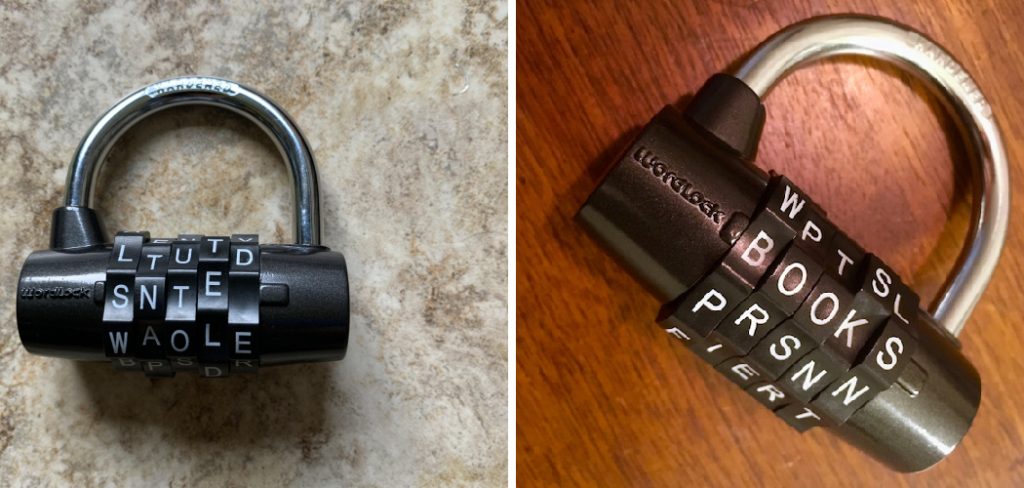
What is a Wordlock?
A Wordlock is a type of combination lock that uses letters to form words as the unlocking code instead of traditional numerical combinations. This design makes it more intuitive and user-friendly, as it is often easier to remember a meaningful word than a random string of numbers. Wordlocks are commonly used on bike locks, lockers, and other personal security devices, providing a secure yet practical solution for safeguarding belongings. They typically feature a series of rotating dials with letters, allowing users to create custom word combinations for added convenience.
Understanding How a Wordlock Works
A Wordlock operates through a series of rotating dials, each featuring letters of the alphabet. To set a custom combination, users can align the dials to spell a word of their choosing. This word functions as the “key” to unlocking the device. The internal mechanism of the lock is designed to release only when the correct word is aligned, ensuring secure locking. These locks are engineered to prevent tampering or brute force opening, making them a reliable choice for personal security. The simplicity and flexibility of setting memorable, personalized combinations make Wordlocks both practical and highly secure for a range of applications.
10 Methods How to Pick a Wordlock
1. Try Common Word Combinations
The simplest and most straightforward method for picking a wordlock is to try common words that are often used as default combinations. Many wordlocks are initially set to common combinations like “LOVE,” “1234,” or the owner’s initials.
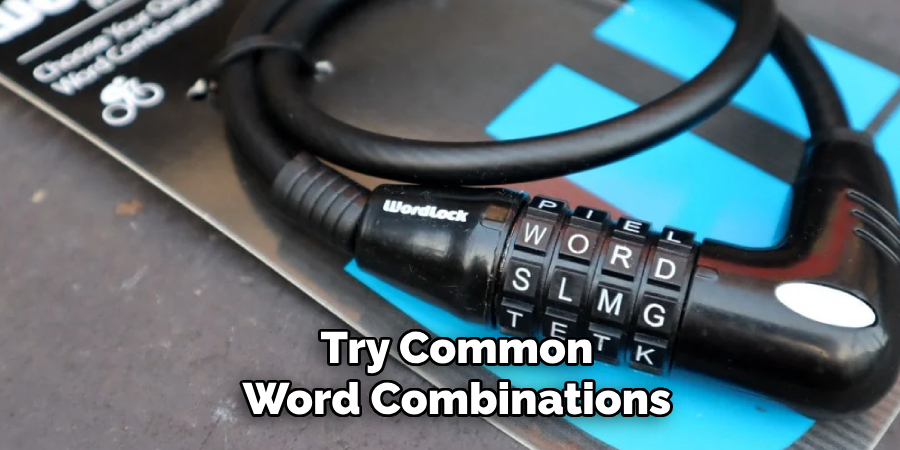
If you have access to the lock and no instructions, start by trying the most likely combinations that may have been used by the owner. Experimenting with words that are personally meaningful or commonly used as passcodes can be a quick and easy method. This trial-and-error approach works best when you don’t have the exact combination but have an idea of the word’s possible length and letter choices.
2. Use the Process of Elimination
If you know the number of letters in the combination but don’t know the actual word, using a process of elimination can be effective. Begin by narrowing down the potential words based on the number of dials or letters available on the lock. If you have four dials, you can list all common four-letter words and work through each possibility. You can also try common words that relate to the lock’s usage—such as “DOOR,” “LOCK,” or “HOME.” Narrowing down options based on meaningful words can significantly reduce the number of combinations to try, making this method more efficient than random guessing.
3. Search for a Pattern
Many wordlocks are designed with specific patterns or preset combinations. Understanding the general design of the wordlock can give you clues about the possible combination. Some locks have letter patterns that repeat, are set with common words like “OPEN,” or use specific starting letters based on alphabetical ordering. By looking for a pattern in the letters on the lock’s dial, you may identify a few potential combinations that are easy to test. Additionally, look for any signs of wear or finger impressions on the dials that may indicate frequent letter choices. These signs can give you a helpful hint when trying to decode the word.
4. Reverse Engineering the Lock’s Letters
If you have access to a wordlock and can see the current letters on the dials, you can try reverse engineering the lock’s combination. Start by examining the lock’s mechanism and see if you can discern any other useful information, such as how many clicks it takes to move each dial.
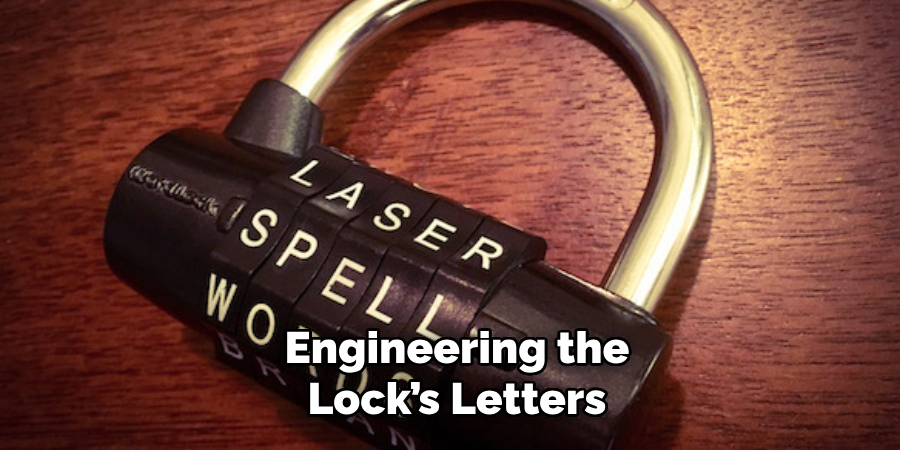
Some locks feature a slight resistance as you rotate the dials to a specific position, allowing you to deduce where the correct letters may align. This method requires patience and attentiveness, but with close observation, you can learn the mechanics and reverse engineer the combination.
5. Try the Manufacturer’s Default Combination
Many wordlocks come with default preset combinations, which are often simple, common words used by manufacturers. These default settings are frequently the same for many locks of the same brand or model. If you can identify the brand or model of the wordlock, researching the manufacturer’s default combination could save you time. Many wordlock manufacturers use default combinations like “ABCD,” “0000,” or “LOCK” to make setup easier for users. While this approach can be hit or miss, it’s worth trying before moving on to more advanced methods.
6. Utilize Online Tools and Databases
Some users may have documented their wordlock combinations in online forums or databases, making it easier for you to find the combination to your specific lock model. Searching the web for common wordlock combinations associated with specific brands or lock types can sometimes reveal a wealth of information. Websites that specialize in lock mechanisms and puzzles often share lists of potential combinations for specific wordlock models. While this is not guaranteed to work for every lock, it’s a quick way to gather potential options and see if your lock’s combination is available online.
7. Use a Lock Decoder Tool
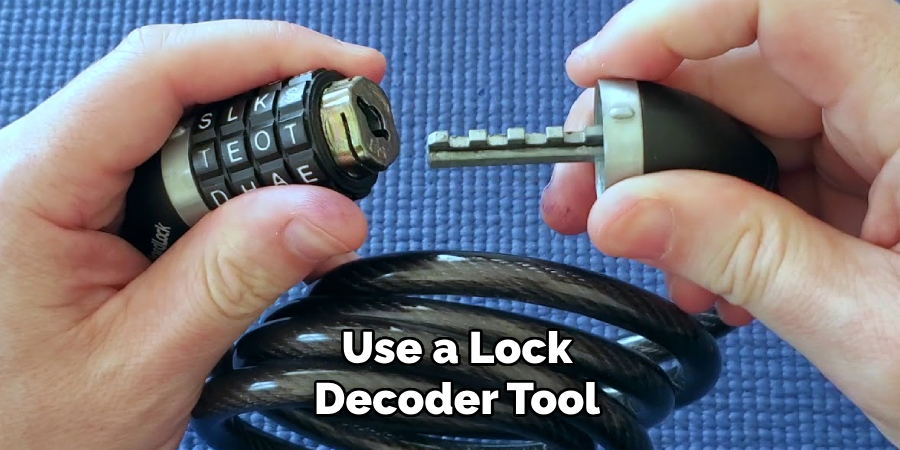
A lock decoder tool is a specialized device used to bypass the normal unlocking process. These tools work by feeling the inner mechanism of the lock and determining the correct sequence of letters or numbers that align with the internal pins. While this method is often used by locksmiths, it is also accessible to anyone with the right tools and skills. The tool works by using physical pressure and movements to detect the specific position of each lock mechanism. If you have access to a lock decoder, this method can be an effective way to quickly and safely open a wordlock.
8. Consult a Professional Locksmith
If you’re unable to pick a wordlock on your own, seeking the assistance of a professional locksmith may be your best bet. Locksmiths have extensive experience working with various types of locks, including wordlocks, and can often open locks using specialized tools and techniques. A locksmith will know how to manipulate the lock without damaging it and can even rekey or reset the combination if necessary. This method is particularly helpful if you’ve exhausted all other options and need to access the contents inside a locked box or secure area without damaging the lock itself.
9. Use the Dialing Method (For Wordlocks with Specific Dials)
Some wordlocks feature distinct, separate dials for each letter of the word combination. To pick such a lock, you need to rotate the dials and listen for any subtle clicks or feedback when the correct letter is aligned. Start by turning each dial and feeling for a slight resistance or “click” as you rotate it to different letters. With enough practice, you can detect these small feedback cues, helping you figure out which letters are part of the combination. If the lock has multiple dials, repeat this process for each one until you find the correct sequence. The more familiar you are with the lock’s mechanism, the easier this method will become.
10. Consider the Context of the Lock’s Use
In some cases, the context of the lock’s intended use can give you important clues about the word combination. For example, if the lock is on a locker in a school gym, the combination might relate to school-related terms, like the name of the school, a popular sports team, or an acronym used in the school.
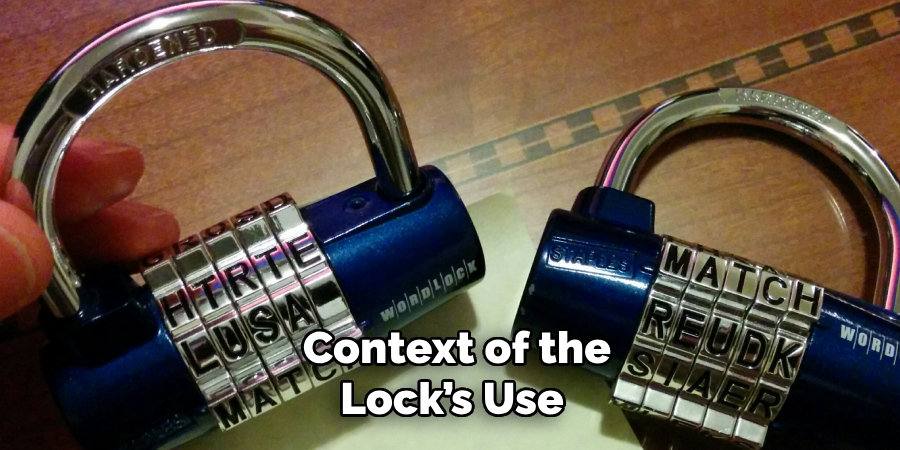
If the lock is on a personal item, the word might be a personal favorite or a meaningful term to the owner, such as a name or a pet’s name. Understanding the context in which the lock is used can significantly reduce the number of potential word combinations and give you insight into what the lock might be set to.
Conclusion
Picking a wordlock may seem like a difficult task at first, but by employing a combination of common methods and creative strategies, you can increase your chances of success. Whether you begin with the simple trial-and-error approach, use the process of elimination, or resort to advanced methods like using a decoder tool or contacting a locksmith, each approach provides valuable tools for unlocking the combination. Keep in mind that patience and persistence are essential—if one method doesn’t work, another might, and understanding the design and context of the wordlock can guide you towards finding the right combination. Thanks for reading, and we hope this has given you some inspiration on how to pick a wordlock!

